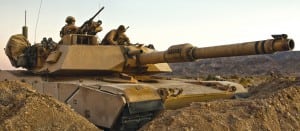
The Army needs to build new combat vehicles that integrate current and future technologies if it wants to regain the technological overmatch it may have already lost against peer competitors, said Lt. Gen. H.R. McMaster, director of the U.S. Army Training and Doctrine Command’s Army Capabilities Integration Center.“We are gravely underinvested in close combat overmatch, in combat vehicles,” McMaster said on Tuesday at a one-day conference on Army platforms hosted by the Association of the U.S. Army at its headquarters…

 By
By 











